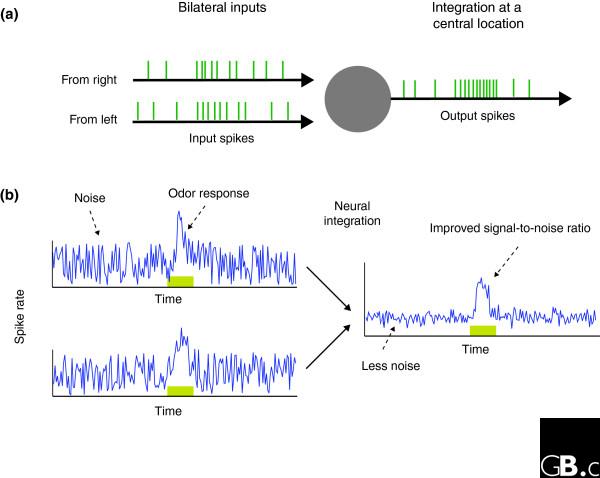Figure 2.

Neural integration of bilateral olfactory inputs enhances signal-to-noise ratio. (a) Schematic diagram of the bilateral olfactory input pathways and a hypothetical central neuron (grey circle) receiving those inputs. Information is transmitted as spiking activity. Typically, in the absence of any olfactory stimulus, the receptor neurons tend to show a baseline spiking response that contributes to the 'noise' in the system. Both the detection level and the measurement resolution of the system are dependent on the input noise level. (b) Neural integration can reduce uncorrelated noise. The plots on the left represent the firing rate of two receptor neurons over time. The baseline fluctuations observed in the two independent channels (left) are reduced after integrating them (right), thus improving signal-to-noise ratio. This improvement may be the chief contribution of dual olfactory inputs to chemotaxis. The green box indicates the release of a puff of odor.
